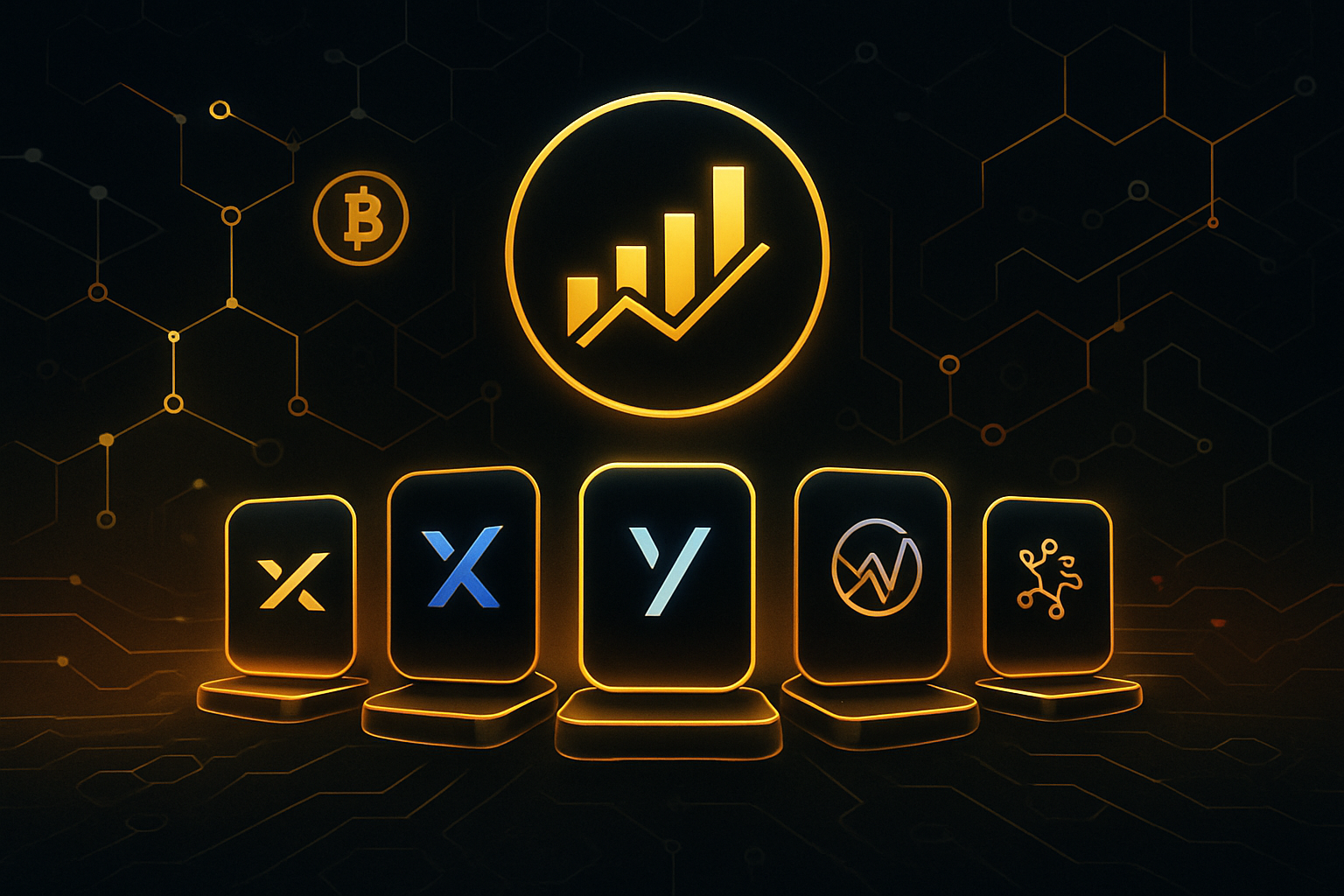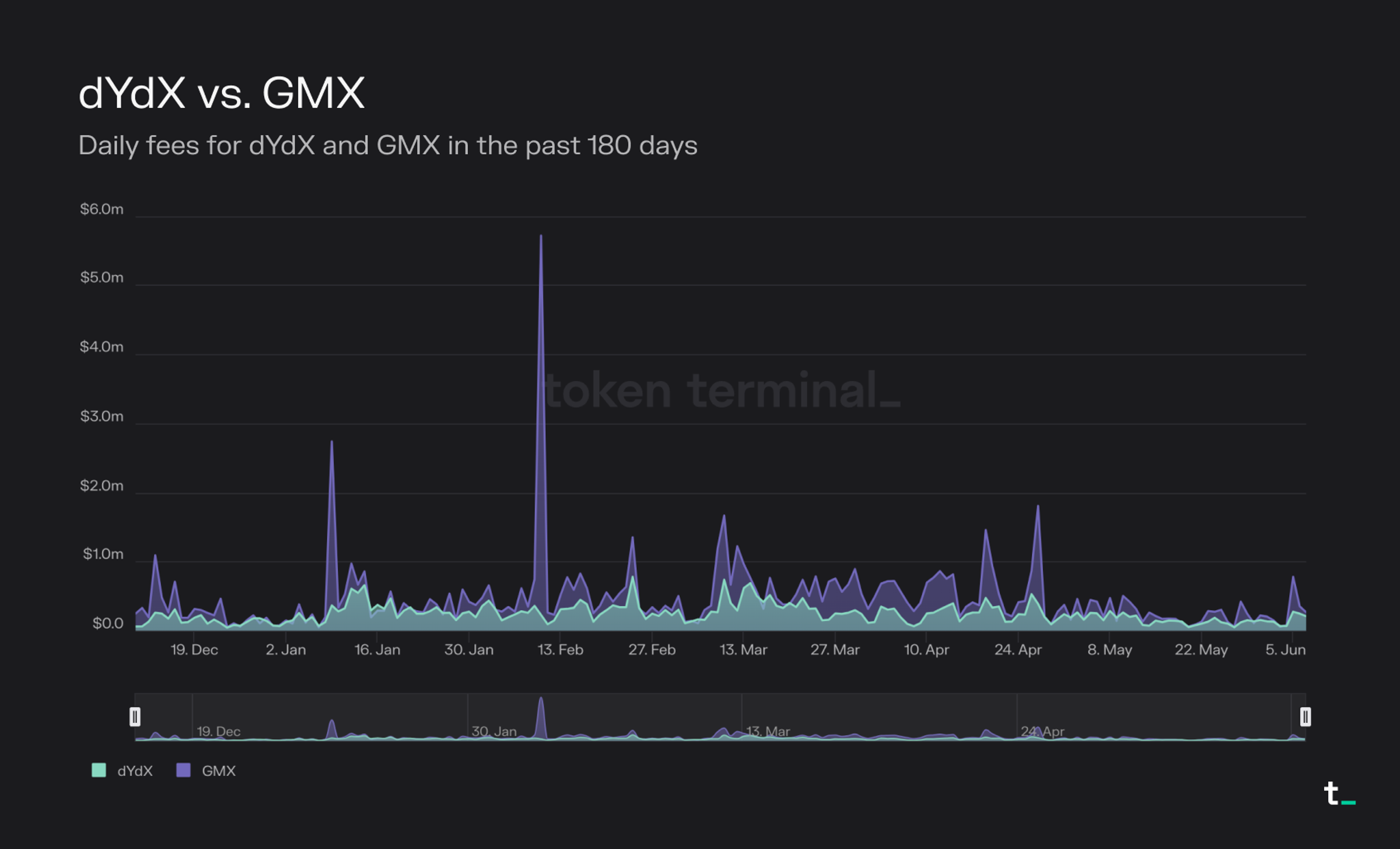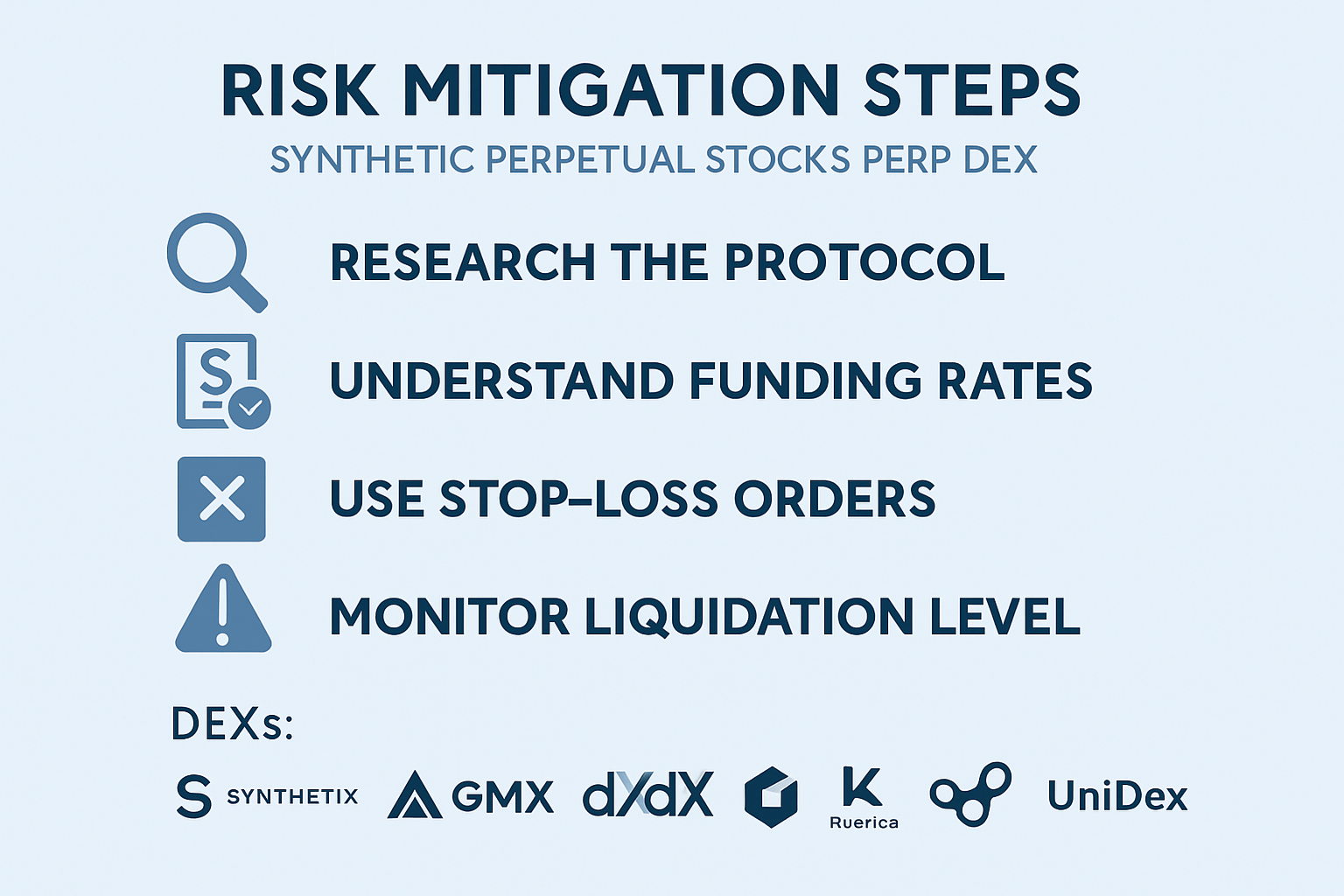
Synthetic perpetual stocks are redefining what it means to access equity markets, offering a new world where traders can go long or short on Tesla, Apple, or the S and amp;P 500 entirely on-chain. With no need for legacy brokers or centralized intermediaries, these synthetic assets are traded on decentralized perpetual exchanges (perp DEXs) that operate 24/7 and allow for leveraged positions. In 2024, the landscape for synthetic stocks trading has matured rapidly, with leading platforms like Synthetix Perps (V3), GMX, dYdX, Gains Network (GNS), Kwenta, Polynomial, and UniDex setting the pace for innovation and adoption.

How Synthetic Perpetual Stocks Work: The On-Chain Mechanism
At their core, synthetic perpetual stocks are crypto-native derivatives that mirror the price action of real-world equities, without requiring actual ownership of those shares. Instead, they’re powered by smart contracts that track external price feeds (oracles) and settle trades directly on the blockchain. When you trade a synthetic stock perp contract on a DEX like Synthetix Perps or Kwenta, you’re entering into an agreement with other market participants to exchange value based on the future price movement of a stock such as AAPL or TSLA.
Unlike traditional futures contracts with set expiry dates, perps are designed to be held indefinitely, as long as your margin requirements are met. The funding rate mechanism ensures that perp prices stay close to their spot counterparts by periodically transferring value between longs and shorts depending on market imbalance. This design enables continuous exposure to synthetic stocks without rolling over contracts or worrying about settlement deadlines.
The Top 7 Perp DEX Platforms for Synthetic Stocks in 2024
The race to dominate synthetic stock perps has produced several standout platforms in 2024:
- Synthetix Perps (Synthetix V3): The original pioneer in DeFi synthetics now offers deep liquidity and composability across multiple chains through its V3 upgrade. Synthetix’s robust oracle system underpins many other platforms’ synthetic offerings.
- GMX: Known for its user-friendly interface and low-fee model, GMX supports leveraged trading of both crypto and synthetic equity indices with up to 50x leverage.
- dYdX: Built using the Cosmos SDK and now fully decentralized, dYdX brings institutional-grade order books to DeFi traders seeking exposure to over 200 markets, including major stocks, on a permissionless platform.
- Gains Network (GNS): GNS specializes in multi-asset perps with high leverage options and innovative risk management tools tailored for retail traders.
- Kwenta: Closely integrated with Synthetix liquidity pools, Kwenta provides seamless access to synthetic stock perps alongside advanced analytics and automation features.
- Polynomial: An emerging options protocol branching into perps trading with unique yield strategies layered atop synthetic assets.
- UniDex: Functioning as both a meta-aggregator and perpetual exchange platform, UniDex aggregates liquidity from multiple sources for optimal trade execution on synthetic assets.
If you want a comprehensive breakdown of these platforms’ features and fees side-by-side, check out our in-depth comparison guide.
The Strategic Edge: Rewards and amp; Risks of Synthetic Stock Trading on DEXs
The appeal of decentralized perpetual exchanges boils down to three main advantages: leverage, accessibility, and transparency. Traders can amplify their positions using margin, sometimes up to 50x or more, and maintain exposure around the clock without geographic restrictions. There’s no single point of failure; users retain custody of their funds throughout the trading lifecycle.
However, this frontier comes with its own set of risks. Liquidity is not uniform across all perp DEXs, thin order books can lead to slippage during volatile periods. Smart contract vulnerabilities remain an ever-present threat; even top-tier protocols have seen exploits in recent years. On-chain transparency also exposes traders to front-running risks via MEV bots scanning pending transactions before confirmation.
Navigating these risks requires vigilance: thorough research into platform security practices, understanding funding rates and liquidation mechanics, and diversifying across multiple protocols when possible. For hands-on guides about margin management or comparing protocol safety features among these top players, including Synthetix Perps V3 and GMX, see our related resources like this comparative guide.
Each of the leading perp DEXs brings its own flavor to synthetic perpetual stocks trading. Synthetix Perps (V3) stands out for its composability and robust oracle infrastructure, giving traders confidence in price accuracy and execution. GMX is lauded for its minimal fees and deep liquidity, especially attractive for high-frequency or institutional-grade strategies. dYdX, with its order book model and advanced risk controls, appeals to those coming from traditional finance who want a familiar yet decentralized experience. Gains Network (GNS) carves a niche with synthetic exposure to not only US equities but also forex and commodities, all on-chain.
Kwenta leverages Synthetix’s pools while layering on analytics and automation, making it a favorite among DeFi power users seeking both transparency and efficiency. Polynomial, though newer in the perps space, innovates by integrating yield strategies with perp trading, an option for those looking to compound returns. Finally, UniDex acts as a meta-aggregator, routing orders across multiple liquidity sources so traders can access the best prices on synthetic assets without manual hopping between platforms.
Comparative Table of Top Synthetic Perpetual Stock DEXs (2024)
| Platform | Leverage Limit | Supported Assets | Fee Structure | Unique Features |
|---|---|---|---|---|
| Synthetix Perps V3 | Up to 50x | Synthetic stocks, crypto, forex, commodities | Dynamic fees based on market volatility and liquidity | Deep liquidity via pooled collateral, composable with DeFi protocols |
| GMX | Up to 100x | BTC, ETH, AVAX, synthetic stocks | Low trading fees (0.1%), funding rate applies | Multi-chain (Arbitrum, Avalanche), decentralized order book, real yield to liquidity providers |
| dYdX | Up to 50x | 200+ markets including major stocks, crypto | Maker-taker model, variable based on volume | Order book model, high liquidity, built on Cosmos SDK |
| Gains Network (GNS) | Up to 150x (crypto), 50x (stocks) | Crypto, synthetic stocks, forex | Low fixed trading fee (0.08%), dynamic funding rates | Synthetic equities, on-chain oracles, flexible leverage |
| Kwenta | Up to 50x | Synthetic stocks, crypto, forex | Variable fees, typically 0.1%–0.3% | Built on Synthetix, advanced order types, governance token |
| Polynomial | Up to 20x | Synthetic stocks, crypto options | Low fees, additional protocol incentives | Automated trading strategies, DeFi integration |
| UniDex | Up to 50x | Synthetic stocks, crypto, forex | Aggregator: best price execution, variable fees | Meta-aggregator for perps, cross-platform liquidity sourcing |
What Sets Synthetic Perp Stocks Apart?
Synthetic perpetual stocks are more than just tokenized representations, they are programmable financial instruments that let you build strategies impossible in legacy markets. For example:
- 24/7 trading: No market closures or after-hours limitations; react instantly to global events.
- No KYC required: Trade directly from your wallet without intrusive onboarding.
- Composability: Integrate perps with DeFi protocols for hedging, yield farming or cross-asset arbitrage.
- Diversification: Access equities alongside crypto majors, on one platform.
This flexibility attracts not only retail traders but also sophisticated quant funds experimenting with cross-market strategies that blend synthetic stocks with stablecoins or crypto volatility indices.
Key Considerations Before Trading Synthetic Perpetual Stocks
The growth of decentralized perpetual exchanges is reshaping how global investors approach equity exposure, but prudent risk management remains paramount. Here are some practical tips before diving in:
- Platform Security: Favor protocols with audited smart contracts and transparent bug bounty programs.
- Liquidity Depth: Check order books or pool TVL before placing large trades; consider aggregators like UniDex to minimize slippage.
- Funding Rates and Liquidation Risks: Monitor funding payments closely, especially during high volatility, to avoid unexpected P and L swings or forced liquidations.
- Diversify Protocol Risk: Spread exposure across several DEXs (e. g. , Synthetix Perps V3 and GMX and dYdX) rather than concentrating capital on one platform.
- User Experience: Platforms like Kwenta offer advanced analytics that can help you monitor margin health and optimize entries/exits in real time.

If you’re ready to get started, or want step-by-step walkthroughs for using any of these platforms, see our detailed guide: How to Trade Synthetic Perp Stocks on Decentralized Exchanges: A Step-by-Step Guide.
The Road Ahead: Innovation and Regulation in Synthetic Stocks Trading
The next year promises even faster evolution as perp DEXs roll out cross-margining, multi-asset vaults and improved oracle systems. Regulatory scrutiny will intensify as volumes climb, but the permissionless nature of these platforms ensures access remains open globally for now. Expect tighter integrations between perp DEXs and DeFi lending/borrowing protocols as composable finance becomes the new normal.
Synthetic Apple Stock (sAAPL) Price Prediction 2026-2031
Professional outlook based on adoption trends, DeFi platform growth, and evolving regulatory landscape for synthetic perpetual stocks on Perp DEXs.
| Year | Minimum Price (Bearish) | Average Price (Base Case) | Maximum Price (Bullish) | Year-on-Year Change (%) | Market Scenario Insights |
|---|---|---|---|---|---|
| 2026 | $8.40 | $10.75 | $13.50 | +14% | Continued growth in DeFi adoption; Perp DEX volumes rising; regulatory clarity improving. |
| 2027 | $9.10 | $12.20 | $15.75 | +13% | Greater institutional participation; more synthetic assets listed; improved liquidity on top DEXs. |
| 2028 | $10.30 | $13.80 | $18.20 | +13% | Mainstream investor awareness; competition increases but market share of sAAPL stable; some regulatory headwinds. |
| 2029 | $11.50 | $15.50 | $21.00 | +12% | Major TradFi integrations; advanced risk controls reduce smart contract exploits; market volatility persists. |
| 2030 | $12.80 | $17.25 | $24.40 | +11% | Synthetic stocks become core DeFi component; cross-chain trading matures; global regulatory frameworks harmonize. |
| 2031 | $13.60 | $19.00 | $27.50 | +10% | Market matures; sAAPL volume rivals traditional equity derivatives; regulatory acceptance in key jurisdictions. |
Price Prediction Summary
The outlook for sAAPL on Perp DEXs is broadly bullish, driven by accelerating DeFi adoption, expanding use cases, and growing acceptance of synthetic assets. While volatility and regulatory uncertainty may periodically weigh on prices, the long-term trend reflects strong potential for both price appreciation and market cap growth as synthetic perpetual stocks become integral to decentralized trading ecosystems.
Key Factors Affecting Synthetic Apple Stock Price
- DeFi adoption rates and growth of Perp DEX trading volumes
- Regulatory clarity and global harmonization regarding synthetic assets
- Smart contract security improvements and risk management advancements
- Integration with traditional finance (TradFi) and institutional onramps
- Liquidity depth and competition among top Perp DEX platforms
- Macro market cycles and broader crypto sentiment
- Expansion of asset listings and diversification of synthetic offerings
Disclaimer: Cryptocurrency price predictions are speculative and based on current market analysis.
Actual prices may vary significantly due to market volatility, regulatory changes, and other factors.
Always do your own research before making investment decisions.
Savvy traders who master both the mechanics of synthetic perps and the nuances of each platform will be best positioned to thrive in this new era of decentralized equity markets. The tools are here, the edge belongs to those who use them wisely.






